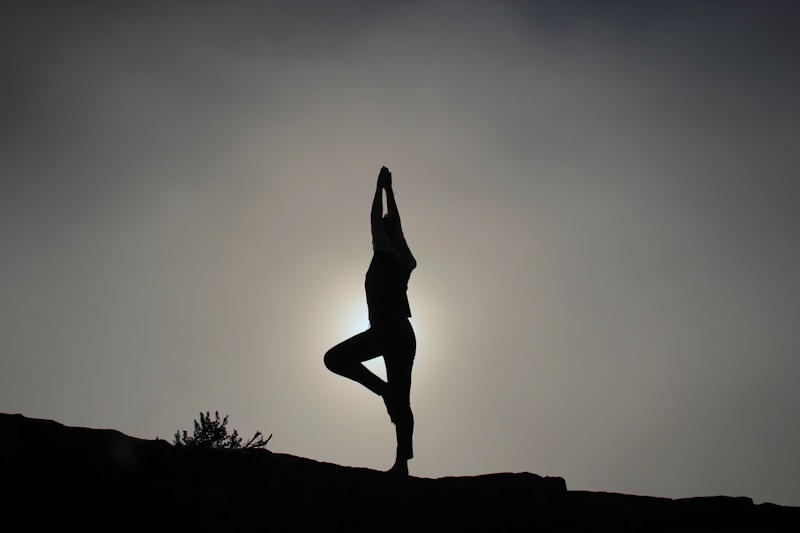I remember during my yoga teacher training being in tears. A lot. At the time I had no idea why, and I went through a range of emotions such as shame, anger, fear, embarrassment and annoyance. I woke up in the morning and often thought, “I don’t want to go to yoga.”
I did go though, and gradually through my consistent, steady practice, it became clearer to me what was taking place: I was cleansing my body, processing all the emotions and feelings I’d buried away in places which now manifested as tight hips and stiff shoulders, and shifting the prāna so that the energy could flow through me more gracefully. I was discovering how to find ease, feel safe and have courage both in my life and on the yoga mat.
It wasn’t easy, and often I felt frustrated with myself, wondering why I couldn’t just get on with it, why I couldn’t just kick myself up into Scorpion Pose, or at least try. These negative attitudes towards myself actually made my journey a lot harder, and have been the hardest thing of all to change.
Becoming Who We Are
In yoga, these emotions and feelings buried away in the body are called samskaras, otherwise known as impressions, or memories. We can also understand samskaras by looking at addiction. In the same way that someone with an alcohol addiction can take actions and behaviours to feed their addiction, we can also become accustomed to behaving in a particular way based on how we’ve behaved in the past.
For example, if you associate smoking with a way to relax and have five minutes away from your desk, the chances are you will struggle not only with the nicotine withdrawals when you give up, but also the break away from work that you used to have. We begin to define ourselves by what we consider to be our failures: the person who loves cake, just can’t quit cigarettes, or has to go out on a Friday night, and these become our impressions.
The more we practice yoga, the more we become aware of these patterns and realise that we can change them if we want to. It can be tempting to think that yoga is going to immediately bring about huge change in our lives, that we can become shiny and new, with better bodies and a calmer mind. Although it’s true that these can be the outcomes of yoga, I’m afraid to tell you that there’s usually some digging through the dirt that has to be done first.
Stripping Back The Layers
Our intake of antidepressants and pain killers increases by almost 20% each year. Despite most of us being fortunate enough to have access to clean water, food, and shelter, we still feel depressed. Although medication is an essential for some (and if you are feeling depressed, please do see your GP), for me personally my feelings of depression and worry came from a lot of stuff in my past which I hadn’t fully processed.
Through yoga we begin to explore all the various memories we’re holding (I like to compare this to unpeeling the layers of onion) and mover closer to our true, inner self. We become empowered firstly with how we move our bodies, and secondly how we live our lives. This is also called neuroplasticity – movement can really help us to think different. Check out the book by Norma Doidge, The Brain That Changes Itself.
It’s exciting stuff sure, but leaping straight to the transformation part without first taking the time and compassion to examine just why we have the habits we do, can really just be another way of creating more layers, which ultimately will need to be unpeeled. Simply put, we need to put in the work to get the results. Read on to discover three ways to begin to discover those impressions.
1. Back off and feel the pose
We live in a busy world, and if you tend to be very busy and stressed in your everyday life, it’s very easy to take this attitude into the yoga studio. Yoga itself in some aspects has become faster, with an increase of vinyāsa and power yoga styles becoming increasing popular. Without a mindful attitude though, at best you’re not practicing yoga, at worse you could injure yourself.
Yoga has a reputation for being good for us — which it is, if practiced mindfully. If we force our bodies into poses we’re not ready for, or forget to breathe through the vinyāsa, then we can risk hurting ourselves. If this sounds familiar to you, try backing off your speed, and find intensity through holding poses a little longer. How does this pose feel? Not how do you think it should feel, or look, how does this pose feel, in your body? I attended training recently with other yoga teachers, and I was surprised at how many confessed to not being able to feel into the body. Give yourself time and space to practice with awareness. See what happens.
2. Consider setting an intention
Whether your intention is simply to be attentive and aware whilst on the mat, or have a better work/life balance by making sure you always take your lunch break, find something that works for you. Remember that it takes time for these intentions to kick in. We are, after all, creatures of habit. Be patient with yourself, and persevere. Change takes time, and like everything else in yoga, it’s all about practice. A little bit of faith and a lot of determination can go a long way, I promise.
3. Be aware
Do you always reach for the chocolate bar every time things get a little bit stressful at work? Do you find yourself wasting half an hour a day by checking your emails, scanning Facebook, or watching cute videos of animals doing yoga on YouTube? It’s not that these are necessarily ‘bad’ things to do, but becoming aware of the patterns that lead us to these actions is the first step to changing any habits which may not be working in our favour anymore.
Changing these habits is the next step we need to take to begin to create new impressions, new habits, to help us achieve our goals. We need willpower to do this! Practicing yoga which awakens the manipura chakra, the navel energy, can help us build our willpower and determination. Postures like Boat Pose (nāvāsana) can help us to feel stronger and more able to make the changes we need.
Take It Slow
It’s also important at this stage not to beat ourselves up about having a bad day, or even a bad week. This is a lifelong process, and if we’re criticising ourselves every step of the journey, it’s going to make the journey feel a lot more painful and difficult than it needs to be. Remember our first yama, ahimsā, and be kind to yourself.
As for me, I’ve moved through a lot since beginning my teacher training, but those samskaras still rear their head every now and again. Luckily for me I’ve found the yoga practices which helps me to simply get on my mat, and let the old, familiar thoughts and feelings pass on by, but that’s not to say it’s always easy. Following the three steps above really can make a difference. I’d love to hear how you get on.













